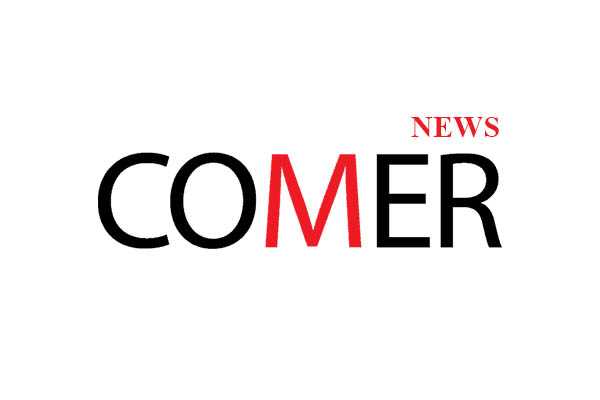December 10, 2013, marked the second year for COMER – Committee on Monetary and Economic Reform – in Federal Court since the Canadian dollar [Loonie] became an object of claim that its governance could be found wanting in need of reform.
Canadian constitutional lawyer Rocco Galati filed Toronto Action T-2010-11 on behalf of William Krehm, Ann Emmett, and COMER on December 12, 2011. To: restore the use of the Bank of Canada to its original purpose, by exercising its public statutory duty and responsibility. That purpose includes making interest-free loans to municipal/ provincial/federal governments for “human capital” expenditures (education, health, other social services), and/or infrastructure expenditures. The [COMER] action constitutionally challenges the government’s fallacious accounting methods in its tabling of the budget by not calculating, nor revealing the true and total revenues of the nation before transferring back “tax credits” to corporations and other taxpayers.
I am neither lawyer nor banker. My expertise is IBM JAD – Joint Application Design research and development to improve the quality of IT Projects. JAD is a team approach to analyze business process redesign requirements using a point-form language to compose system specifications in a workshop setting. The object is to visualize a working business model and trial-run prototype technology before implementation. My JAD textbooks and academic work are relevant to COMER regarding research of a business model that tests bank protocol for legal compliance.
The COMER case is featured in The Public Bank Solution by Ellen Brown1 published June 2013 (Ref Notes). An extract from Chapter 17, page 208, “Taking It to Court,” is reprinted in the COMER Journal. It is a high-profile case heard December 5, 2012, by Prothonotary Justice Aalto.2 Around August, 2013, Aalto ruled the allegations not justiciable (capable of being settled by law or by the action of a court).
The December 10, 2013, appeal motion had to be moved to a larger court to seat some fifty COMER members and supporters wanting to observe jurisprudence.
COMER asserts the Bank of Canada and Minister of Finance et al. fail Canadian citizens by not exercising monetary and financial policy in the best interests of taxpayers. My personal recall from my notes in court is as follows:
Galati argued for COMER Appellants that Justice Aalto made errors of judgment. Namely:
One, constitutional challenge should be decided by trial judge with evidence before the court rather than a “motion” granted on the merits of “pleadings”;
Two, that the Bank of Canada Act is flawed with respect to the interpretation of the word “may” in Section 18. And three, given the court decided substantive issues over which it did not have jurisdiction in a motion to strike, Aalto did in effect prove merit…which is therefore cause for trial.
Galati spoke about forty-five minutes. Russell questioned COMER issues to do with alleged fallacious accounting and what “tax credits” the government could be hiding. Galati spoke of no taxation without representation, and he said, “The Queen gets her tax when elected officials make that provision from the budget.” He referred to pre- and post-Charter of Rights, Sections 7 and 15, saying there is no case for non-constitutionality and that the Minister of Finance does not have discretionary powers. Galati said the case of omission of financial elements, reduction, elimination, or delay of required funding for human needs includes hospitals, education, social benefits, and so forth.
And, if the Minister of Finance is hiding a tax component from its citizens – that alone is a breach of protocol. He summarized the constitutional issue: “Foreigners benefit from the unfair treatment of Monetary Policy over Canadians for whom the Act was created.” The judge looked to lawyer Peter Hajecek to reply for HRH Queen Elizabeth the Second et al.
Hajecek structured his defense around the Strike decision. He said justiciability of the matter was determined by its appropriateness for trial that tests for “…a reasonable chance of success?” He looked at Galati, “There’s no tort,” he denied.3 “My friend would find it difficult to prove Canadians could get a better deal.” He argued no causal connection of harm from alleged breaches. He said the Plaintiffs must connect State action to deprivation, “That my friend cannot prove.” He cited spending on nuclear missiles, but the example stirred a groan from unimpressed onlookers. Hajecek spoke to allegations quoting, “Render impotent Canadian Sovereignty,” which he said was not judicial. “It is more a political attack,” the lawyer objected, saying, “They want the court to rewrite the Bank Act.” He pointed out that a Bill for originating a tax does not exist outside the House of Commons budgetary process. The lawyer for defense was uncomfortably aware of being observed. “Does the public have an interest?” Hajecek seemed to answer his own question as he turned to look at Krehm, “You only have to look at court attendance.”
He remarked about age, Krehm onehundred, Emmett an octogenarian, and Paul Hellyer former Defense Minister of Canada just turned ninety. He likened COMER “think-tank” members to an interest group in cooking and was troubled the Plaintiffs cited HRH Queen Elizabeth the Second, “The Queen!” Hajecek ended with, “I think I have wasted everyone’s patience.” He acknowledged he had done, and the judge nodded for him to stand down.
Justice Russell looked at Galati who reaffirmed that government suppression is the essence of the case. He told the court the judiciable question is foreign interests and damages caused by change of bank policy. Galati closed and Russell said he would refer judgment. The judge gathered up documents and cleared the court.
After the hearing, COMER assembled in the lobby and Galati was approached to discuss what happened, and to answer questions. He said he hoped the Strike will be reversed and that the case will go to trial. Galati is ready to continue, and file evidence for a COMER day in court.
End Notes
1. Ellen Brown JD is US Attorney, president of Public Banking Institute and author of twelve books. The Public Bank Solution is a comprehensive history of money, notable bankers through millennia, and banking up to and beyond the 2008 Global Credit Crunch. Brown sets public and private bank models apart like “Jekyll and Hyde” split personalities: Publicly owned banks operate in public interest by law; privately owned banks interpret law solely for privatized gain and purpose of socialized loss from public wealth.
The analysis highlights the Bank of Canada a special case (page 199): “Before 1935, the Canadian government did not have a Central Bank. It had to borrow from private banks that issued their own banknotes, with the country’s largest bank, the Bank of Montreal, serving as the government’s de facto banker.” Page 200: “William Lyon Mackenzie King, elected Prime Minister in 1935, thought the bank should be public. He admonished: ‘Until the control of the issue of currency and credit is restored to government and recognized as its most conspicuous and sacred responsibility, all talk of the sovereignty of Parliament and of democracy is idle and futile.’”
The new Bank of Canada started as a private bank in 1935 until 1938 when the Bank Act was amended that made it a publicly owned self-funding institution. Operation of the Bank of Canada is defined by Statute, the government has duty of oversight and accountability, and the assets of the Bank of Canada belong to the people of Canada. It is the only public-bank among G20 nations. 1974 saw the end of Canadian self-funded money when the BIS – Bank of International Settlements – established policy that for the sake of “financial stability” governments must borrow from private global banks. Page 207: “Thus in 1993, 91 percent of the debt consisted of interest charges…. By 2012, the government had paid C$1 trillion in interest – twice its national debt. Interest on the debt is now the government’s largest budget expenditure – larger than health care, senior entitlements or national defense.” Page 208: “If the Canadian government had continued to fund itself as it had before the mid-1970s, estimates are that Canada would now be operating with a surplus of C$13 billion.” The federal government passed budget cuts in 2012 to service an outstanding C$581 billion debt that Brown writes could have been avoided if Canadians had used its own Bank to rent its own money. Page 204: “…private banks create the money they lend just the same as public banks do. The difference is that a publically owned bank returns the interest to the government and the community, while a privately owned bank siphons it into private accounts, progressively drawing money out the productive economy.” Page 202: “According to William Krehm in A Power Unto Itself: The Bank of Canada, the 1938 nationalization allowed the central bank to create money to finance federal projects on a nearly interest-free basis. The bank could also lend to the provinces. The interest collected went back to the federal treasury.” That is the COMER claim struck down in the justice system pending the (above) appeal ruling for trial.
2. Webster’s Dictionary: “Protonotary n. the chief clerk in the courts of Chancery, Common Pleas and King’s Bench.”
3. Thomson’s Dictionary of Banking: “Tort. A civil wrong which arises independently of any contract.” Webster’s Dictionary: “Tort n. A breach of duty, other than a breach of contract for which the offender will be subject to legal responsibility.”








